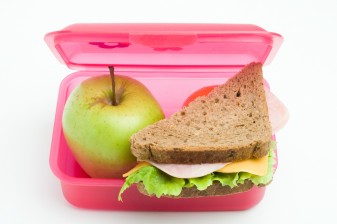
At many public schools today, kids are lucky to get more than 15 minutes to eat. Some get even less time.
And parents and administrators are concerned that a lack of time to eat is unhealthful, especially given that about one-third of American kids are overweight or obese.
The American Academy of Pediatrics recommends that students get at least 20 minutes for lunch. But that means 20 minutes to actually sit down and eat — excluding time waiting in line or walking from class to cafeteria.
At Oakland High [in California], over 80 percent of the students qualify for free or reduced-price lunch. And officially, students get about 40 minutes for the meal. But Jennifer LeBarre, Oakland Unified School District\’s nutrition services director, admits that the actual table time is far shorter. At times it\’s just 10 minutes.
\”I think it\’s a legitimate complaint that there\’s not enough time to eat,\” LeBarre says. \”If we are being asked to eat our lunch in 10 minutes, that\’s not enough for us. So I really think we need to really work more for the 20-minute table time.\”
Oakland High is hardly alone. In a wide-ranging by NPR, the Robert Wood Johnson Foundation and the Harvard School of Public Health, 20 percent of parents of students from kindergarten through fifth grade surveyed said their child only gets 15 minutes or less to eat.
Ironically, relatively new federal school-nutrition guideline changes may be making the situation worse. Under federal rules, schools have to increase the availability and consumption of fruits and vegetables — among other changes. It\’s part of an effort to improve nutrition and combat childhood obesity.
But eating more healthful foods can take more time, LeBarre says. \”It\’s going to take longer to eat a salad than it will to eat french fries.\”
Image: School lunch box, via Shutterstock




